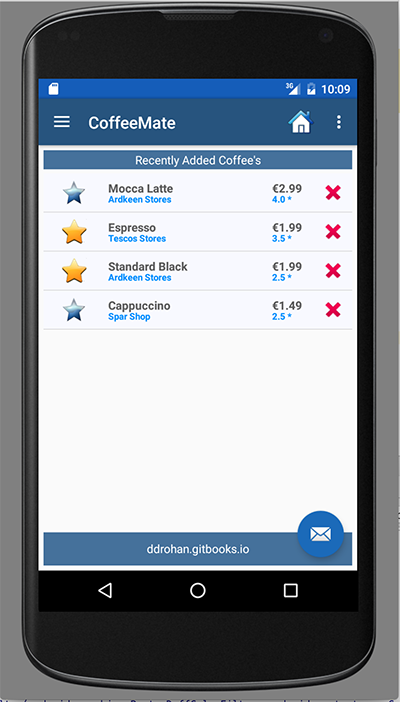App Refactoring - Adding Database Support
Before we complete this step, there's a few classes you need to import to help you along. Once you import the necessary Database classes, this step is relatively straight forward - all you have to do is replace the method calls that manages the coffeeList with the respective dbManager calls.
First thing to do is download the necessary database classes in the [database](..\/archives\/database.zip) archive and add them to a new ie.cm.db package in your project.
Take a few moments to investigate the classes and familarise yourself with the methods you'll be using. There are a number of classes you'll need to modify to add database support to your project, but initially, you need to create an instance of DBManager in CofeeMateApp.java and both open\/close the database when necessary.
Our DBManager instance inside our Application Object
public class CoffeeMateApp extends Application {
//public List <Coffee> coffeeList = new ArrayList<Coffee>();
public DBManager dbManager = new DBManager(this);
@Override
public void onCreate()
{
super.onCreate();
Log.v("coffeemate", "CoffeeMate App Started");
dbManager.open();
}
@Override
public void onTerminate()
{
super.onTerminate();
dbManager.close();
}
}
Once you make this change (and save the file) you'll get a number of errors, which actually indicates which classes you need to now update and add the database calls (and remove the coffeeList calls). Each error requires only one line of code to be fixed, so have a go and updating each of the classes (and we'll have a look at the solution near the end of the Practical Lab).
Once you fix all the errors, and run the app again, you should see your coffee list - but this time those coffees are stored in a database.
And as a final check, if you call the setupList() method of the DBManager reference in your CoffeeMateApp reference 'app' (replacing the existing setup method in 'Home') you should see the following list:

Well Done!